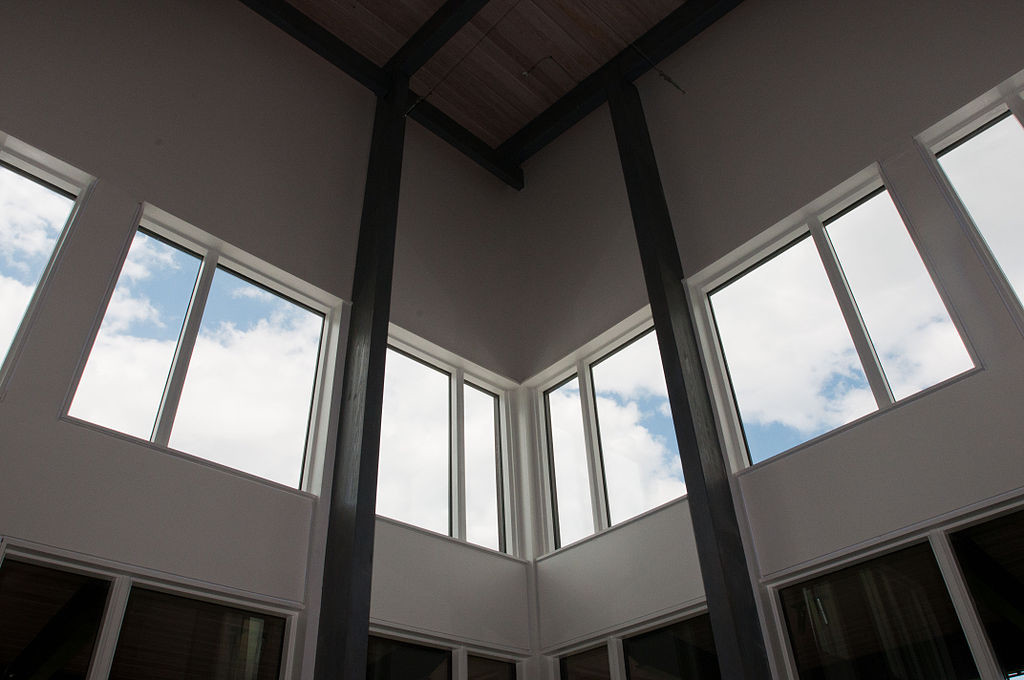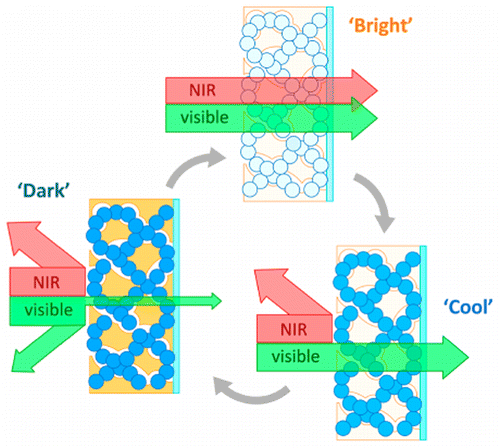
[Image above] Credit: USDA.gov; Flickr CC BY 2.0
I don’t know about you… but during peak season temps, my utility bills skyrocket. That’s because I live in the Midwest, where winters are beyond frigid and summers are sweltering. The climate here runs the gamut, to be sure, but why does that mean I have to hemorrhage money every time the mercury rises or plummets?
It’s because the windows that help enclose my apartment just aren’t smart enough. They don’t do much to trap the warmth when it’s cold, or keep things cool inside when it approaches sauna-level outside. And when the sun hits the windows in the living room at just the right time of day, the glare is nearly blinding.
Lucky for me (and for those who can relate), smarter windows might be a consumer reality in the not-too-distant future.
And I’m not talking about photochromic windows already on the market that darken when exposed to UV rays. The materials currently being developed and studied by researchers the University of Texas at Austin actually allow windows to let light pass through without transferring heat and, on the flip side, to block out light while allowing heat transmission.
Delia Milliron, associate professor in the department of chemical engineering at the University Texas at Austin, and her team describe how the new materials work in two new research papers.
In 2013, when Milliron was a chemist at Berkeley Lab, she and her team were the first to develop smart windows based on dual-band electrochromic materials that “blend two materials with distinct optical properties for selective control of visible and heat-producing near-infrared light (NIR),” according to a University of Texas at Austin news release about the study.
In their previous research, the team used a small electric current to independently control the amount of light and energy released on and through a nanocrystal material.
Since then, they’ve “engineered two new advancements in electrochromic materials—a highly selective cool mode and a warm mode—not thought possible several years ago,” according to the release. According to the abstract of the paper published in this week in Nano Letters, the functional materials are “two active electrochromic materials, vacancy-doped tungsten oxide (WO3-x) nano crystals and amorphous niobium oxide (NbOx) glass” that are “arranged into a mesostructured architecture.”
The cool mode technology works thanks to the team’s newly developed nanostructured architecture for electrochromic materials that allows for a cool mode to block NIR (the hot stuff) but still lets visible light through. Think of this as a summertime solution—you wouldn’t have to pull the shades and live like a vampire just to keep the heat at bay.

The illustration demonstrates the dark, bright and cool mode made possible by the researchers’ new architected nanocomposite. The team organized the two components of the composite material to create a porous interpenetrating network. This organization enables substantially faster switching between modes. Credit: Nano Letters
The warm mode concept works in the opposite way—it’s a simple coating that blocks visible light, but lets in the heat. This would be ideal for anyone indoors on a bright-but-cold winter day that wanted to take advantage of the sun’s heat, but reduce glare.
“We believe our new architected nanocomposite could be seen as a model material, establishing the ideal design for a dual-band electrochromic material,” Milliron says in the news release. “This material could be ideal for application as a smart electrochromic window for buildings.”
From an economic perspective, giving precise control to indoor occupants when it comes to managing just how much heat and sunlight passes through a window could greatly shrink heating and cooling costs for homes and buildings.
And the researchers at the University of Texas at Austin aren’t the only ones working hard to scale up electrochromic glass solutions for commercial use.
A group of researchers at the Georgia Institute of Technology in Atlanta have developed a polymer coating for glass that can change the lens color of glasses instantly with a small, user-controlled electrical current. They published their work in the American Chemical Society’s Applied Materials & Interfaces and demonstrate the process in a recent ACS video.
Smarter windows and sunglasses on-demand? The future’s so bright…
The cool mode concept paper, published in Nano Letters, is “Nanocomposite Architecture for Rapid, Spectrally-Selective Electrochromic Modulation of Solar Transmittance” (DOI: 10.1021/acs.nanolett.5b02197).
The warm mode concept paper, published in Journal of the American Chemical Society, is “Nanocomposite Architecture for Rapid, Spectrally-Selective Electrochromic Modulation of Solar Transmittance” (DOI: 10.1021/acs.nanolett.5b02197)
How do you think electrochromic technology could be scaled up in the next five to ten years? Share your thoughts with us!
